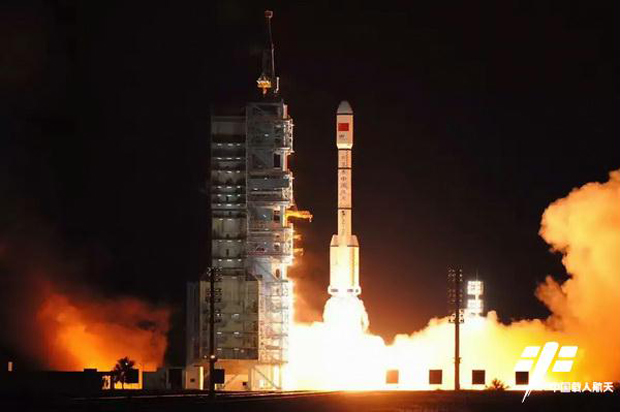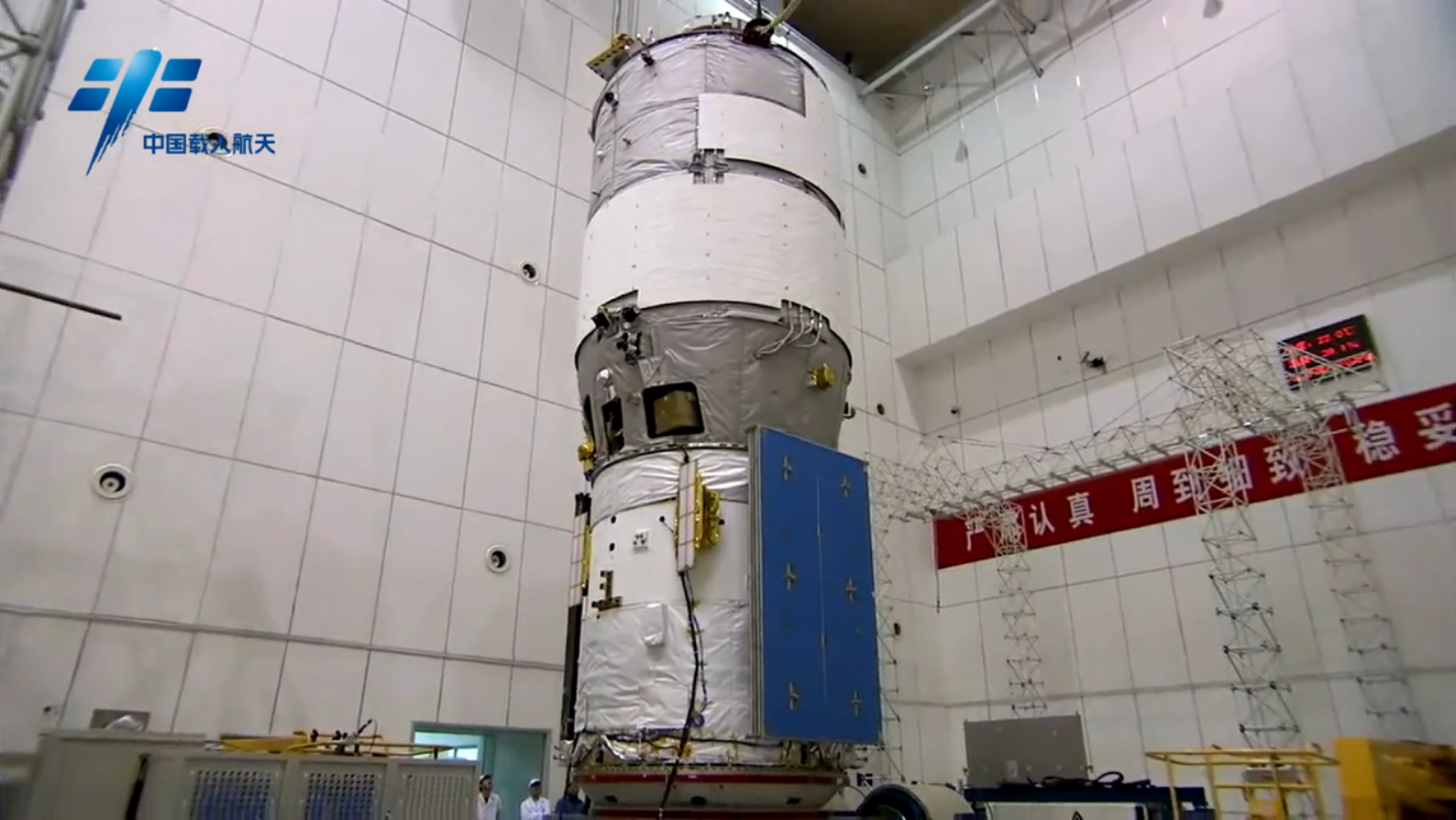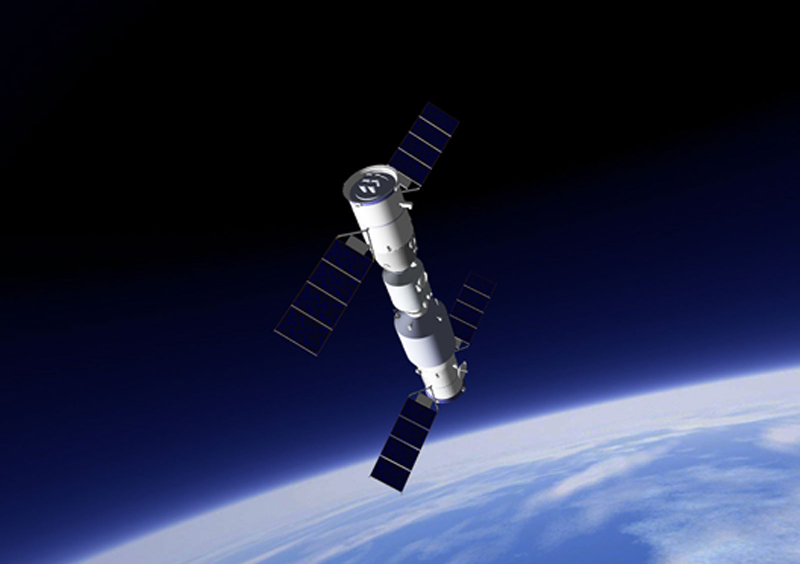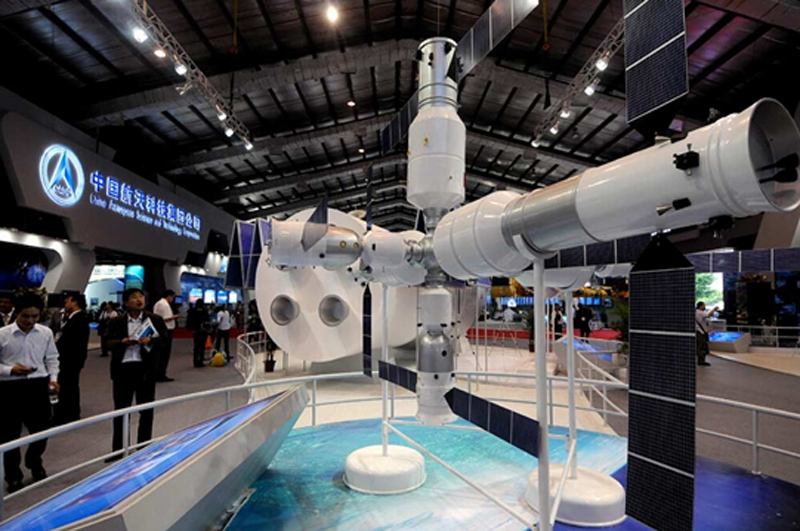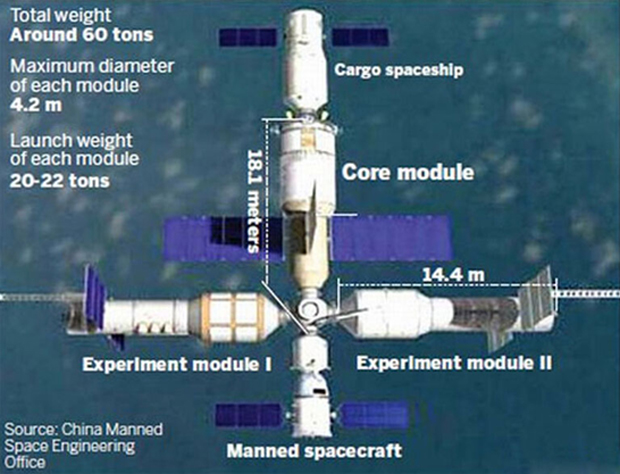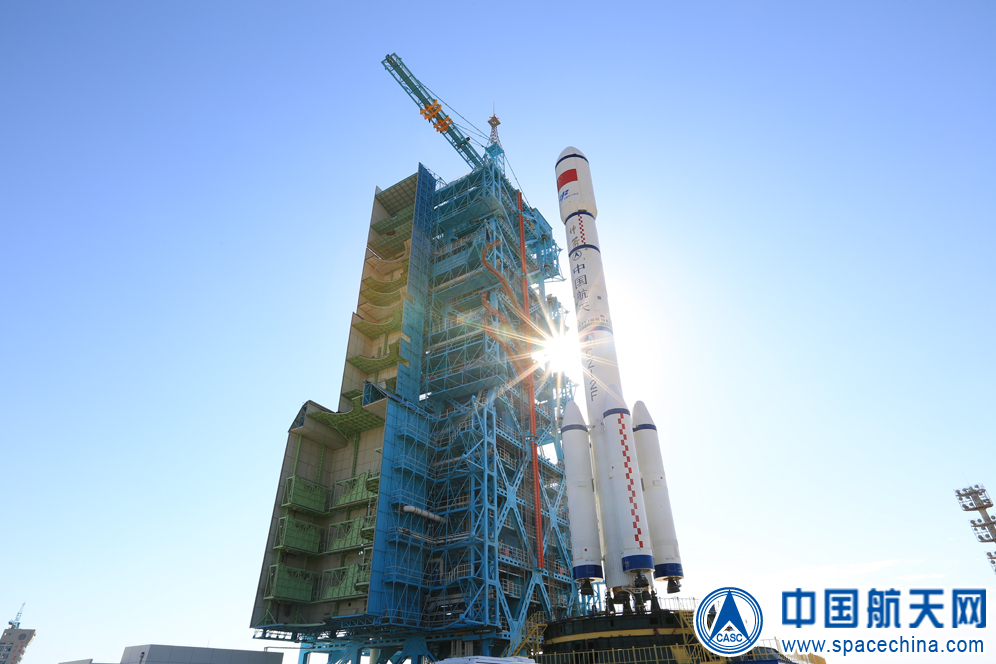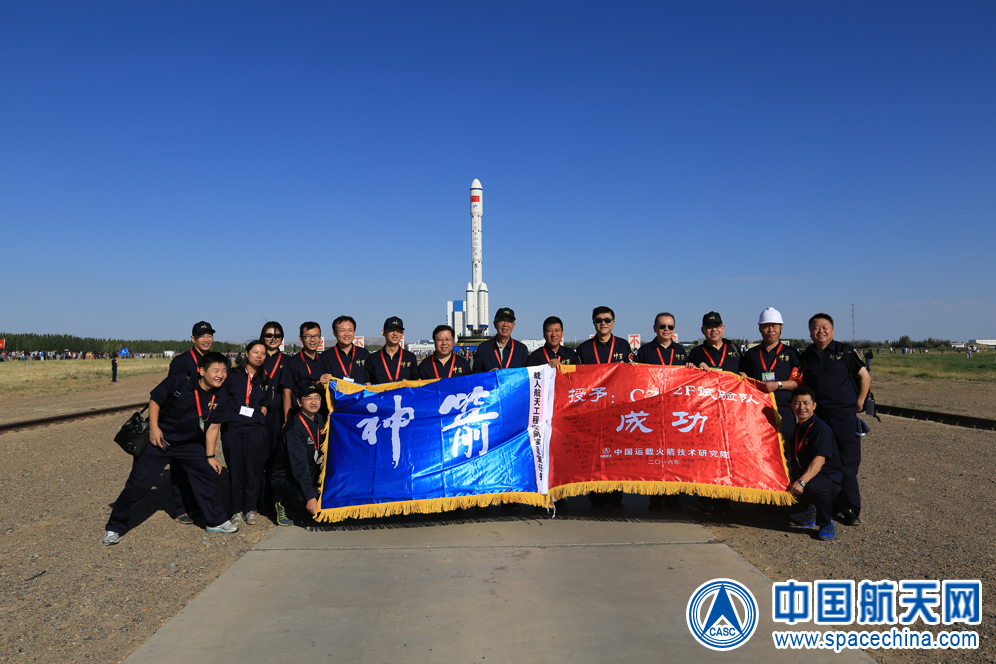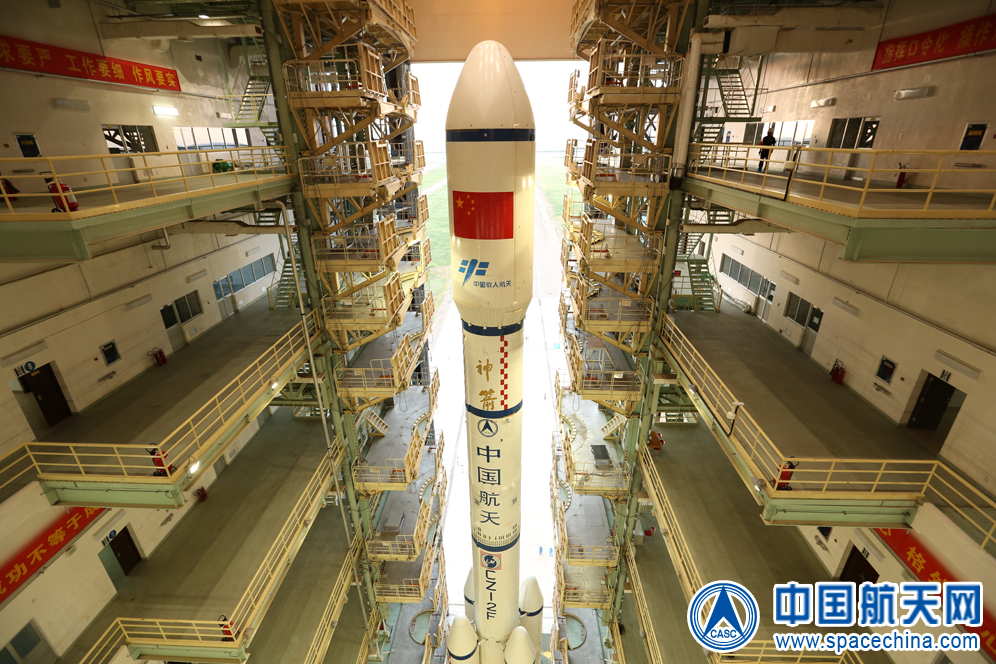China's Tiangong-2 Space Lab Mission in Pictures
Liftoff for Tiangong-2!
On Sept. 15, 2016, China launched its second manned space habitat, the Tiangong-2 module, on a pathfinder mission designed to set the stage for a larger space station scheduled to begin construction in the 2020s. Tiangong-2 launched into orbit uncrewed, riding a Long March 2F rocket (seen here) into orbit from the Jiuquan Satellite Launch Center in northwest China at 10:04 a.m. EDT (1404 GMT; 10:04 p.m. local Beijing time). Read our full launch story here
The launch kicks into motion what should become China's longest human spaceflight yet, a 30-day mission by two Chinese astronauts who will launch to Tiangong-2 aboard the country's Shenzhou-11 spacecraft. That mission will launch in the fall of 2016.
See more photos from the Tiangong-2 mission here.
FIRST STOP: Meet Tiangong-2
Meet Tiangong-2
The Tiangong-2 space lab (shown here in a China Manned Space released image) is a cylindrical spacecraft that appears similar in design to its predecessor Tiangong 1, which launched in September 2011 and ended its mission in early 2016. The Tiangong name means "Heavenly Palace" in Mandarin. Tiangong-2 is 34 feet long (10.4 meters) and powered by twin solar arrays, which can be seen as the blue panels in this image.
China launched two missions to Tiangong 1, an eight-day mission in June 2012 and then again in June 2013 with a 12-day flight.Tiangong-2 weighs in at about 9.5 tons (8.56 metric tons) and will orbit the Earth at an altitude of about 236 miles (380 kilometers), according to state-run Chinese media reports.
Flight controllers with the China Manned Space program will perform a series of tests and checkouts to ensure the spacecraft is ready to host its first long-duration crew. Once those tests are complete, Tiangong-2 is expected to climb to a higher orbit of 244 miles (393 km) - the same altitude that will be used for China's full-size space station.
Breaking space news, the latest updates on rocket launches, skywatching events and more!
NEXT: Shenzhou-11 Is Coming
Shenzhou-11 to Follow Soon
If all goes as planned, Tiangong-2 will host its first visiting crew in mid-October 2016 when the Shenzhou-11 spacecraft arrives with a two-man crew. China Manned Space has not yet named the two astronauts for that mission. Shown here is an artist's depiction of Shenzhou-11 (left) docked at Tiangong-2.
In 2017, China's first unmanned cargo ship, the Tianzhou-1, is expected to launch to Tiangong-2 to test automated resupply mission technology.
NEXT: Space Station Foundation
Space Station Foundation
China Manned Space views the Tiangong-2 space lab as a major pathfinder for its planned full-size space station. Unlike the Tiangong-1 space missions, which were relatively short duration, astronauts will live and work on Tiangong-2 for weeks at a time, and the arrival of Tianzhou-1 will add a supply line for long-stay crews.
China Manned Space officials have said that the country's full-size space station will be pieced together using modules linked to central hubs, as shown in this air show model.
NEXT:China's Space Station Plan
China's Space Station Plan
This China Manned Space graphic offers a better look at the country's planned space station. The orbiting laboratory will weigh about 60 tons, more than six times larger than Tiangong-2, and will feature a series of modules to provide living and research space.
The manned space station is part of China's overall stepping stone approach to human spaceflight that began with the launch of astronaut Yang Liwei on the country's first manned flight in 2003.
NEXT: Rocket Rollout Photos
At the Launchpad
China's Long March 2F rocket rolls out to its launchpad at the Jiuquan Satellite Launch Center in the country's northwest ahead of the Sept. 15, 2016 launch the Tiangong-2 space laboratory.
China used a T2 variant of the Long March 2F (which features four strap-on boosters) to launch Tiangong-2.
NEXT: Saluting Tiangong-2
Saluting Tiangong-2
China Manned Space rocket test crew celebrate the Long March 2F rocket's move to the launch pad in early September 2016 ahead of Tiangong-2's launch.
NEXT: The Powerhouse
The Powerhouse
This image from the China Aerospace Science and Technology Corporation shows the powerhouse behind the Long March 2F T2 rocket. The four strap-on boosters can be seen clusters around a central core booster.
NEXT: Tiangong-2's Rocket
Behold, Tiangong-2's Rocket
A bright sun and brilliant blue sky makes for a dazzling seen as China rolled Tiangong-2's Long March 2F rocket out to the launch pad in early September 2016.
China's Long March 2F rockets are two-stage boosters that stand about 203 feet (63 m) tall.
NEXT: Leaving the Hangar
Leaving the Hangar
The Long March 2F rocket carrying China's Tiangong-2 space lab module leaves its assembly building as it makes its way to a launchpad at the the Jiuquan Satellite Launch Center in the country's northwest.

Tariq is the award-winning Editor-in-Chief of Space.com and joined the team in 2001. He covers human spaceflight, as well as skywatching and entertainment. He became Space.com's Editor-in-Chief in 2019. Before joining Space.com, Tariq was a staff reporter for The Los Angeles Times covering education and city beats in La Habra, Fullerton and Huntington Beach. He's a recipient of the 2022 Harry Kolcum Award for excellence in space reporting and the 2025 Space Pioneer Award from the National Space Society. He is an Eagle Scout and Space Camp alum with journalism degrees from the USC and NYU. You can find Tariq at Space.com and as the co-host to the This Week In Space podcast on the TWiT network. To see his latest project, you can follow Tariq on Twitter @tariqjmalik.
